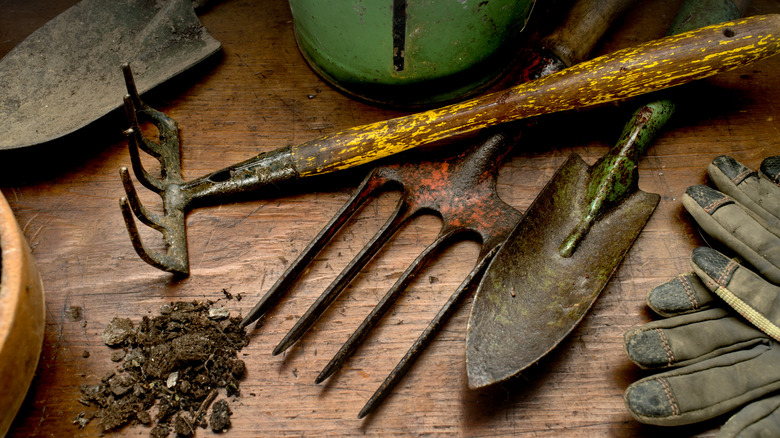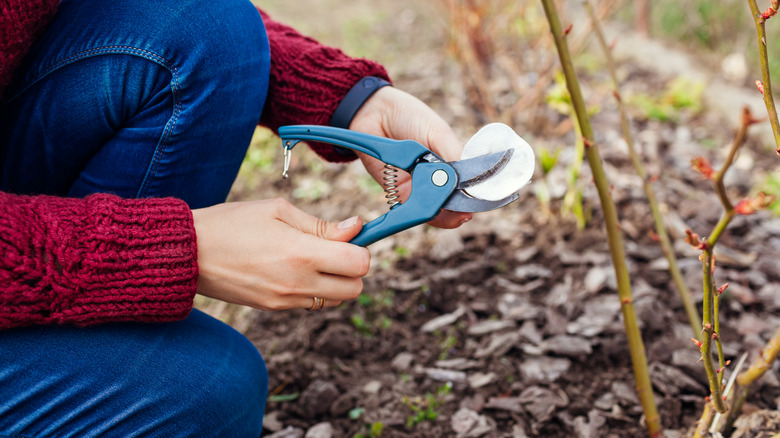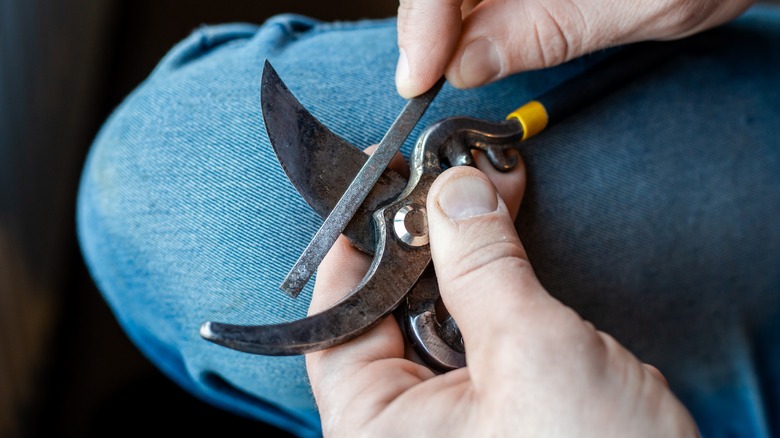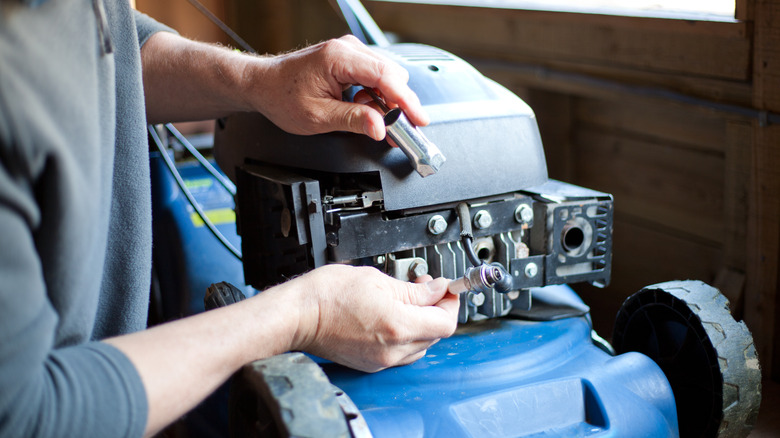The Garden Tool Maintenance You Should Be Doing Every Spring
We may receive a commission on purchases made from links.
Once spring has sprung, it becomes a fantastic time of year to get into the garden and start planting. However, before you can get your hands dirty with potting soil, you'll first have to sully them with a few cleaning products. When entering gardening season, your first order of business should be to make sure all of your tools are in good condition. It's never a bad time to spiff up your gardening tools, but doing it at least once a year at the start of spring is the best way to set the next few months of yard work up for success. So every spring, maintain your hand tools by cleaning them and sharpening the blades, and keep your power tools working well with a tune up.
Ignoring yearly garden tool maintenance can cause your instruments to develop tons of rust, unfixable nicks, and mechanical issues that will render your power tools useless. Luckily, with a solid game plan, it shouldn't take more than an afternoon to get your tools ready for the garden. Along with cleaning your tools, you'll also want to give them a coat of oil and, if needed, remove any rust.
Clean and oil hand tools
The first step in keeping your gardening tools in tiptop shape is to clean them. Ideally, you should rid your hand tools of any chunks of debris every time you pull them out of the shed, but don't worry if you haven't been doing so; deep cleaning your tools once a season or so is enough to maintain them. Tools that only have a layer of surface grime can be easily cleaned with a hard-bristle brush and running water, bringing in a cleaner or lubricant to deal with stubborn sap and residue. Once the tools are clean, dry them thoroughly so they don't rust.
Luckily, if your tools do start to rust, you can usually deal with the problem without too much effort as long as it's not too late in the rusting process. You'll need some sort of tough, abrasive surface to scour away surface rust, like a wire brush, steel wool, or sandpaper. For some extra cleaning power, add a bit of vinegar or commercial rust remover before scrubbing. Don't get too down if you're not able to remove years of rust buildup — that's just a good excuse to invest in a new top-rated gardening tool set. After your gardening tools are all clean, give them an extra layer of protection by applying some oil, like linseed or mineral oil. This will not only make the metal sections of your tools last longer, it can also prevent the wooden handles from cracking.
Sharpen blades and sharp edges
Tools in the garden need to be sharpened for the same reason knives do: Whether you're using a spade to dig up a garden plot or shears to prune back a rosebush, working with sharper tools makes tasks easier and safer. Anything with a blade or sharp edge should be sharpened before being put to work, including small tools like pruners and weeders as well as larger tools like shovels or even bladed lawn mowers. Additionally, if you want to get the best results from the most versatile and useful gardening tool, you'll have to hone it. To accomplish this, you'll need a whetstone, diamond file, or specialized device like the Corona Garden Tool Blade Sharpener.
With your sharpening tool in hand (or set on the table if you're using a whetstone), either draw it along the blade, or draw the blade along the sharpener. The exact method used for sharpening will depend on the tool you're using but, in general, aim to set up the blade so that the edge is towards you, and push it along the sharpener away from you to maintain the blade angle while minimizing potential injury. Until you're comfortable sharpening garden tools without incident, be sure to wear gloves and take any other safety measures before you make your point.
Inspect and maintain power tools
All of the mechanical and electrical components of power tools like lawn mowers, leaf blowers, and weed wackers means they require regular inspections and upkeep. Otherwise, their parts can fail, posing a danger to you and your lawn. Aside from cleaning these machines and sharpening any blades, you'll also need to clean and replace any air filters, and carefully inspect spark plugs to make sure they're working properly. Additionally, you may need to change the oil of some lawn mowers — just make sure you know how to clean your lawn mower from top to bottom first. If you're dealing with gas powered tools, it's likely you'll have to replace the fuel, since gasoline can expire in less than a year when not being used. To avoid this aspect of tool maintenance, drain their fuel tanks if you don't think you will be using them in a long time.
Throughout the spring season, store all of your garden tools properly, or all your maintenance work might go to waste. It's important to keep tools dry so they don't rush, so make sure you have a secure, covered area to keep everything. One excellent way to store metal hand tools while keeping them both dry and oiled up is sticking them in a bucket full of sand with a splash of mechanical lubricant. For optimal shed storage, check out these other tips for organizing your gardening tools.



